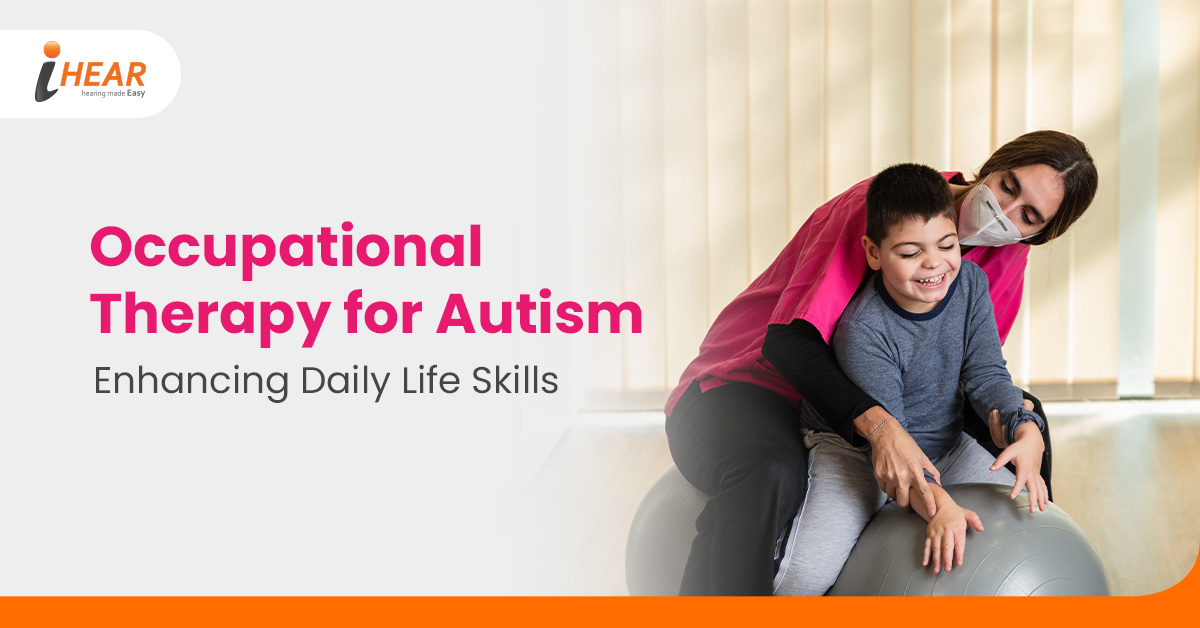Occupational Therapy for Autism: Enhancing Daily Life Skills
A powerful tool that is often overlooked, occupational therapy has the potential to change lives by improving daily living. This blog is written based on this treatment its benefits, technology, and the real world. We’ll explore how it can help people live full, independent lives, whatever their age and circumstances.

Evaluation and Therapy for Daily Activities
“What is occupational therapy?”Its name sounds like an occupational therapy tool, but OT helps people survive a variety of situations throughout their lives, and occupational therapy can be especially helpful for children with developmental delays. Pediatric occupational therapy helps children with cognitive, physical and social challenge sincrease daily skills, become more independent and function at their highest level. How does occupational therapy help autism? Autism spectrum disorder (ASD) is a developmental disorder who sesymptoms include serious social, communication, and behavioral problems.
Because many of the difficulties faced by children with ASD can be resolved with occupational therapy, OT is often used to help them maintain and develop basic skills, especially during the critical 0-3 year period.Research shows that early diagnosis and intervention in autism can have long-term positive effects on later symptoms and skills.

Occupational Therapy and Autism:
Pediatric occupational therapy often plays an important role in helping children with autism improve daily skills. The type of treatment the specialist may receive is determined by the child and his or her unique situation. Daily tasks such as eating, bathing, and dressing may seem normal to us, but for children with autism, these basic tasks can be overwhelming due to the sensory issues associated with autism. OT uses sensory-integrated methods and a variety of related skills to help children and their caregivers identify problems and learn new skills.
When it comes to helping your child succeed, an occupational therapist is part of a team that includes the child’s parents, educators, and other professionals. How does OT contribute?
- By testing whether your child can perform the tasks expected for his age. This includes dressing, playing, eating, and going to the toilet.
- Watching your child’s attention span, their ability to learn new activities, and to engage with others.
- Monitoring your child’s responses to touch and other stimuli, as well as assessing motor skill developments like posture, balance, and the ability to manipulate small objects.
How does an occupational therapist help children with autism spectrum disorder? By working with the child to develop coping strategies and to improve skills related to:
- Daily activities like dressing, grooming, brushing teeth, and using the toilet.
- Relationship skills include playing with others, appropriately expressing feelings, and physical awareness like eye contact and attention span.
- Self-regulation, delaying gratification, and focusing on tasks.
- Fine motor development like coloring with crayons, learning to write, and cutting with scissors.
The goal of occupational therapy when helping children with autism is to improve their quality of life at home, at school, and in the community. Based on each child’s unique developmental level and ability to adapt and thrive, the therapist aims to help them reach their highest potential.
The Benefits of Occupational Therapy:
The benefits of occupational therapy are wide-ranging. It can help people live independently and live a healthy life by improving daily life. Occupational therapy can also have a positive impact on mental health. It can help people cope with mental health and live healthy lives by providing coping strategies and improving mood. Occupational therapy may also benefit healthcare providers. Teaching them strategies to help their loved one can reduce caregiver stress and improve overall care.
The Future of Occupational Therapy:
The future of occupational medicine looks bright. As our understanding of the human body and mind continues to grow, so does our ability to develop effective occupational therapy techniques. An exciting area of development is the use of virtual reality in occupational therapy. This technology can provide a safe and controlled environment where people can practice their skills and gain confidence. Another promising development is the recognition of the role of occupational therapy in public health. Occupational therapy can contribute to a healthier, more active lifestyle by improving people’s ability to perform daily tasks.
Embracing the Power of Occupational Therapy:
Focused on improving daily skills, occupational therapy offers people of all ages a path to independence and self-actualization. Using this powerful tool, we can help people live fuller lives and contribute to a healthier, better life. The future of occupational therapy holds exciting possibilities and offers better ways to improve daily living skills.

